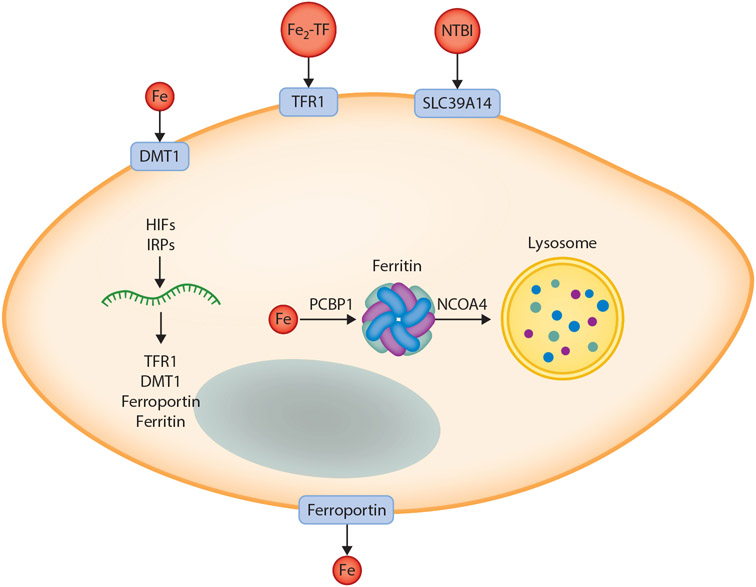Figure 2.
Model of main pathways of cellular iron import and export and intracellular distribution. Iron can be imported into cells via one of several pathways including import of ferrous iron by DMT1; import of Fe2-TF by TFR1-mediated endocytosis, followed by reduction by STEAP3 and export into the cytoplasm; and import of NTBI by SLC39A14. Iron is exported by ferroportin, the only known mammalian iron export protein, then oxidized by hephaestin or ceruloplasmin and bound to transferrin for distribution to other cellular targets. Within the cell, expression of iron transporters, the iron storage protein ferritin, and other factors is regulated by HIFs and IRPs to ensure sufficient but nontoxic levels of iron for cellular metabolism and adequate storage in settings of iron excess. The iron metallochaperone PCBP1 delivers iron to multiple protein targets within the cell including ferritin. Under conditions of iron limitation, ferritin is mobilized to the lysosome by NCOA4 for degradation and liberation of stored iron. For simplicity, not all pathways of iron import are shown, nor are all known intracellular destinations or targets for iron indicated. Abbreviations: DMT1, divalent metal transporter 1; Fe2-TF, diferric transferrin; HIF, hypoxia-inducible factor; IRP, iron regulatory protein; NCOA4, nuclear receptor coactivator 4; NTBI, nontransferrin-bound iron; PCBP1, poly(rC)-binding protein; TFR1, transferrin receptor 1. Figure adapted from images created with BioRender.com.

